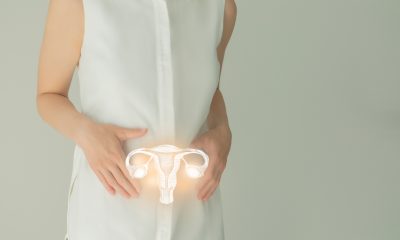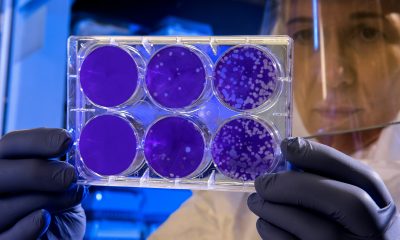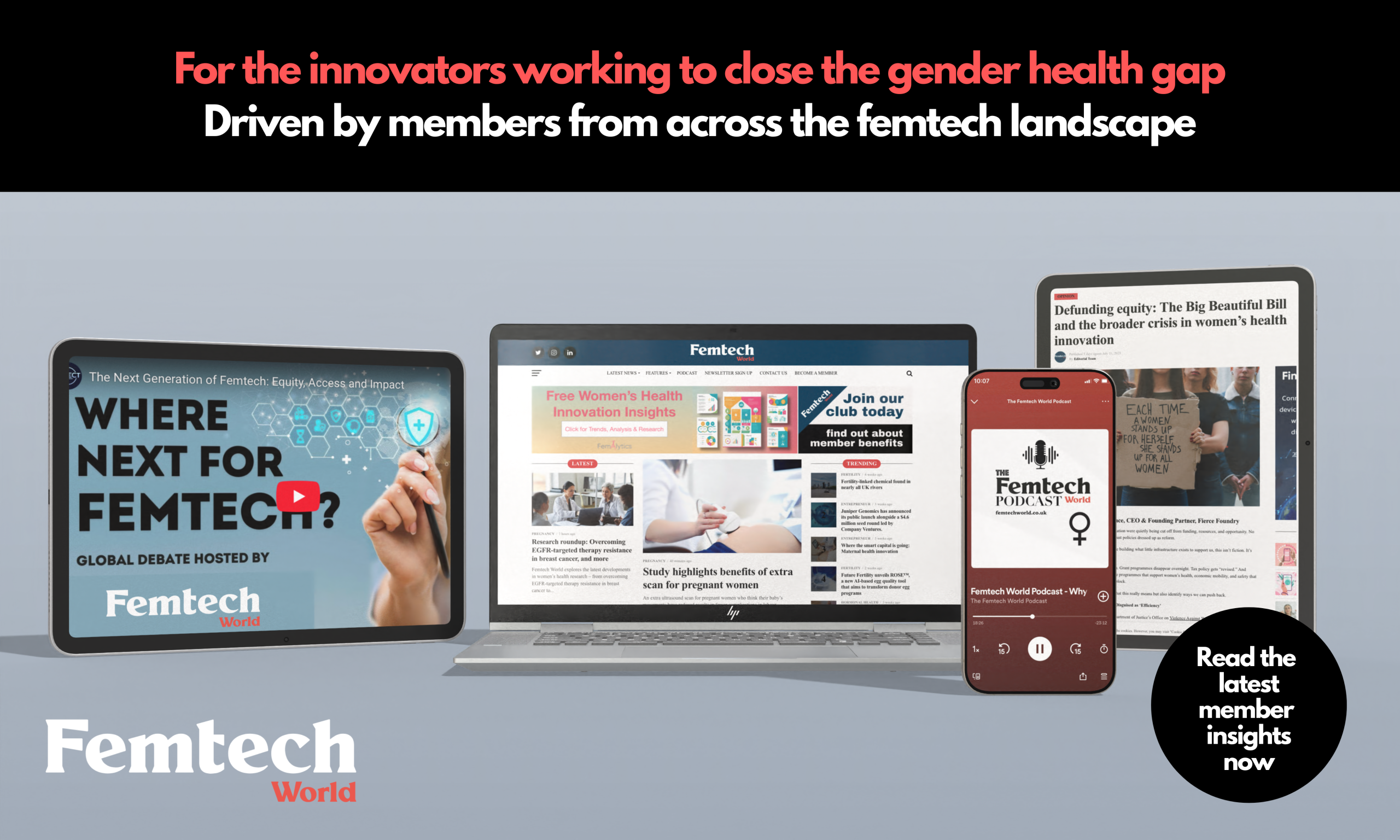Mental health
Headspace launches mental health resources for fertility patients
The new content aims to support people experiencing fertility issues or undergoing treatment
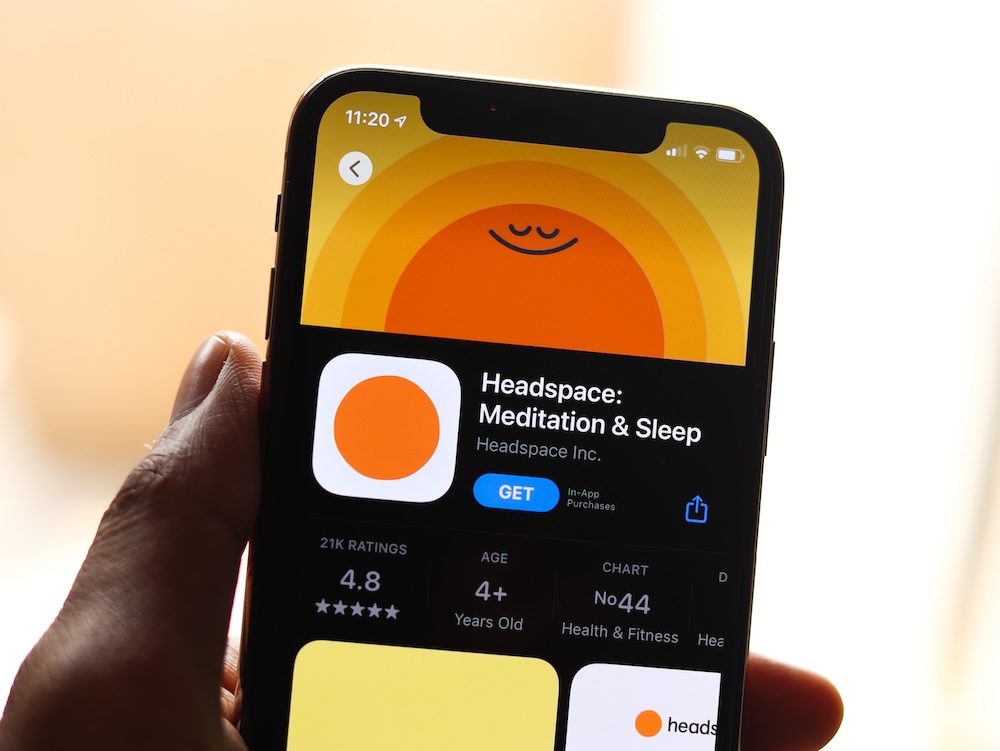
The US mental health platform Headspace has announced new content to support people struggling with infertility.
The free mental health resources, released in partnership with Spring Fertility, aim to help people experiencing fertility issues or undergoing treatment.
One in eight couples struggle to conceive, and 42 per cent of Americans have either sought fertility treatment themselves or know someone who has.
As awareness around fertility challenges becomes more widespread, many are left to navigate an isolating and emotional journey with minimal resources.
From the financial burden to physical demands and an emotional rollercoaster for many, the stress of going through a fertility journey can deeply impact an individual’s and family’s mental health.
The National Institute of Health found that 25-60 per cent of people experiencing fertility challenges report psychiatric symptoms with heightened levels of anxiety and depression significantly higher than controls.
With the overturn of Roe v Wade and the resulting state-by-state pullbacks on IVF access and other reproductive rights, many people report feeling even greater symptoms of depression and anxiety.
“After my third miscarriage, it was incredibly tough not to fall into a sea of self-blame and regret,” said Rosie Acosta, Headspace meditation and mindfulness teacher.
“I began to mourn the loss of my dream of becoming a mother and having the family I once envisioned. The self-blame was crippling.”
Needing a break from the “merry-go-round of guilt, confusion and negative self-talk”, Acosta decided to lean into uncertainty and discomfort and become friends with the normally isolating emotions.
“Through mindfulness and meditation, I was able to ground myself in the present to let go of resentment, grief, and heartbreak associated with my fertility journey,” she said.
“We developed this collection in partnership with leading mental health experts and fertility specialists to help others going through similar experiences.”
The new content collection includes guided meditations and mindfulness exercises, audio conversations, and a video series with insights on listening to the mind and body, coping with feelings of isolation and holding space for grief.
“The road to conception and having a family isn’t easy for many people – in fact, it can be a long, expensive, and painful rollercoaster,” said Eve Lewis Prieto, director of teaching, Headspace.
“As a meditation and mindfulness teacher, I’ve spent years teaching others how to take care of their mind and body, cultivate a balance of mind, and hold themselves with compassion and tenderness when going through tough times.
“While facing a huge unknown myself, I wanted to share meditation practices and mindfulness techniques that have helped me on my own journey.”
When it comes to seeking certain fertility procedures, like IVF, cost is one of the biggest barriers and can add stress to an already challenging time.
Headspace has partnered with Spring Fertility’s grant programme to cover the costs of up to one cycle of IVF for a member of its community, and is collaborating with Rescripted, an online resource where women can find the support and learn to better advocate for themselves.
Dr Nicole Yoder, a fertility specialist at Spring Fertility’s New York City clinic, said: “Infertility can have profound effects on mental health.
“Because of this, it is incredibly important that individuals and couples navigating infertility have access to mental health support and resources.
“In partnering with Headspace on this collection, our hope is that these meditations and conversations can serve as another resource so that more people navigating fertility journeys can feel seen, supported, and not alone.”
To receive the Femtech World newsletter, sign up here.
Mental health
Timing is everything: What AI need to learn about HRT and brain health
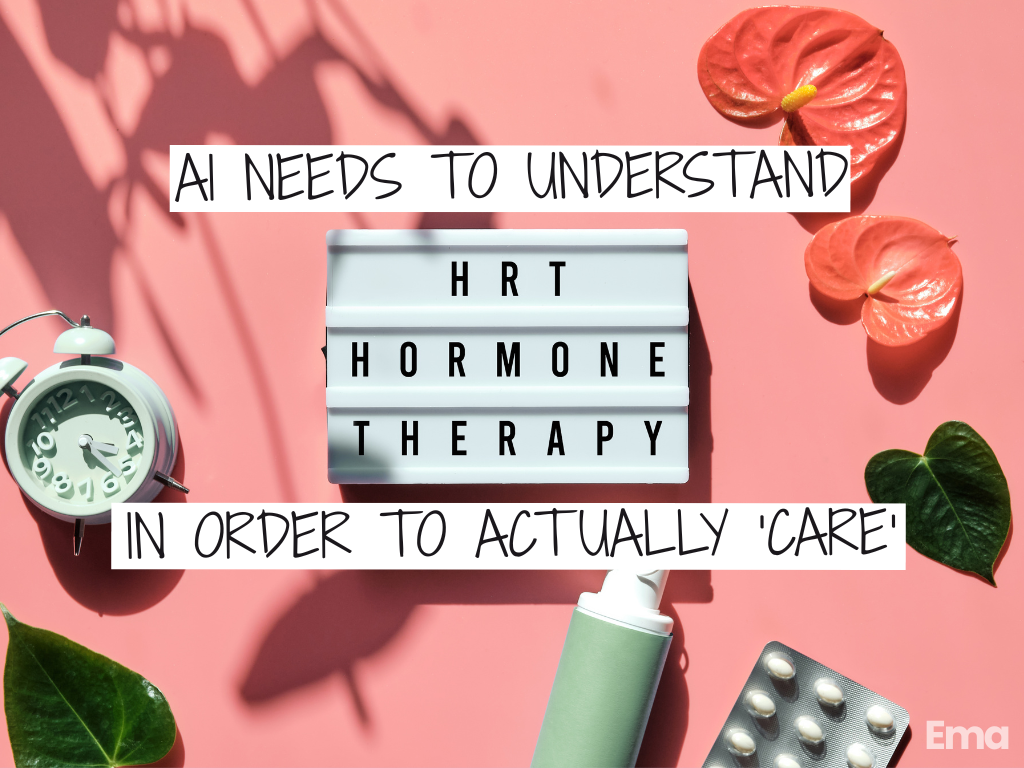
By Morgan Rose, CNM, WHNP-BC, and Dr Kudesia, triple board-certified in Reproductive Endocrinology & Infertility (REI), Obstetrics & Gynecology, and Lifestyle Medicine
The timing of when women start hormone replacement therapy (HRT) may matter more than we ever understood.
The “critical window” for starting HRT isn’t just relevant to brain health; timing has also been shown to shape cardiovascular outcomes.
Early analyses of the landmark WHI trial missed this nuance, including women long past menopause and obscuring benefits seen in those who begin therapy sooner.
Recent research presented at the American Neurological Association Annual Meeting found that women who began HRT within five years of menopause had a 32 per cent lower risk of developing Alzheimer’s disease.
Yet those who started HRT more than five years after menopause showed higher levels of tau proteins, a hallmark of Alzheimer’s, in their brains.
This “critical window” concept challenges the one-size-fits-all model of menopause care. It suggests that when we start HRT, it can be just as important as whether we start it.
Researchers at Mass General Brigham found similar patterns: women who began HRT near the onset of menopause did not show increased Alzheimer’s risk, while those who experienced early menopause with longer lifetime estrogen deprivation faced a higher risk overall.
Why Timing Matters
Women face roughly a 1 in 5 lifetime risk of Alzheimer’s disease, compared to 1 in 10 for men of the same age. The sharp drop in estrogen during menopause may help explain that gap.
Estrogen supports energy production, blood flow, and inflammation control in the brain functions that wane as levels decline.
The data suggest that initiating HRT earlier (around perimenopause or early menopause) may preserve some of these neuroprotective effects, while starting too late could heighten risk once neurodegenerative changes have already begun.
One meta-analysis showed that HRT begun soon after menopause reduced Alzheimer’s risk by over 40 per cent compared to non-users, while starting after age 60 doubled the risk.
These findings don’t make HRT a blanket prescription; they make it a precision intervention.
The Clinical Nuances AI Must Understand
If AI is going to support menopause care safely and intelligently, it needs to understand the reasons behind the actions.
1. Timing Is a Risk Modifier
“Time since menopause” is not just a demographic; it’s a clinical determinant.
AI systems must understand that the same therapy can carry opposite implications depending on when it’s initiated.
2. HRT Is Not Monolithic
There are multiple formulations, routes, and combinations.
For women who still have a uterus, adding progesterone helps protect the uterine lining and lowers the risk of endometrial cancer that can occur with estrogen-only therapy.
Topical estrogen, which has much lower absorption into the bloodstream, may be appropriate for perimenopausal women who are still having periods or postmenopausal women with a uterus who need targeted relief of vaginal or urinary symptoms.
For example:
- Estrogen-alone therapy can raise the risk of endometrial cancer and is typically not recommended for women with a uterus.
- Topical estrogen, with much lower systemic absorption, may be appropriate for perimenopausal women still having periods.
These distinctions must be explicitly encoded into AI frameworks to avoid oversimplified or unsafe recommendations.
3. Safety Requires Scope and Referral
Complex topics like HRT timing and neuroprotection should always prompt an automatic follow-up:
“Please consult a menopause specialist or clinician (such as one credentialed through the North American Menopause Society) to discuss the risks, benefits, and best options for you.”
AI logic must mirror how clinicians practice by inviting deeper discussion, not replacing it.
From Symptoms to Systems Thinking
We need to move beyond viewing menopause as a set of symptoms to manage, and instead see it as a neurological and metabolic inflection point in women’s lives.
That means:
- Bringing conversations about HRT earlier, during perimenopause, when neuroprotective benefits may still be possible.
- Designing AI systems that recognise context and chronology, not just keywords.
- Making personalised, evidence-based menopause guidance accessible to every woman by cutting through misinformation and connecting her to trusted care.
The Bigger Picture
For too long, women’s midlife health has been under-researched and under-resourced. The result is a data gap, which can quickly become a bias when encoded into AI.
If we want women’s health AI to truly care, it must be trained on data that understands the complexity of hormonal transitions, not just the vocabulary of them.
Because the difference between “now” and “five years from now” can determine whether a woman ages with clarity or confusion.
AI should know that.
And soon, it will.
Dr Kudesia is nationally recognised for her expertise in fertility awareness, lifestyle, and culinary approaches to reproductive health, and her advocacy for reproductive rights.
Diagnosis
The #1 complication of childbirth: The crisis hiding in plain sight

By Dr. Jennifer L. Payne and Alisa Marie Beyer
Postpartum depression (PPD) isn’t just the “baby blues.” It’s the most common complication of childbirth, affecting 1 in 5 new mothers, and yet it remains dangerously underdiagnosed, misunderstood, and too often untreated.
Baby blues vs. postpartum depression
Up to 80 per cent of new moms experience the baby blues: brief emotional shifts, crying, irritability, mood swings, that typically resolve on their own within 1–2 weeks after birth. But PPD is different. It’s a serious medical condition that can begin during pregnancy or emerge weeks or months after delivery. It lasts longer, hits harder, and requires clinical care.
The Impact of PPD:
- 50 per cent of women with PPD receive no treatment
- PPD contributes to nearly 1 in 4 maternal deaths
- It costs the United States US$14+ bn annually in healthcare
Many women don’t recognise what they’re experiencing. Others are too overwhelmed, ashamed, or unsupported to seek help. Meanwhile, our healthcare system is still rooted in reactive models that rely on self-reporting, often when a mother is already in crisis.
A predictive breakthrough: Introducing myLuma
At Dionysus Health, we believe mothers and babies deserve better. That’s why we developed myLuma, the first clinically validated prenatal blood test that predicts a woman’s risk of developing PPD as early as 28 weeks into pregnancy.
Why this matters: A shift from reactive to predictive
Traditionally, PPD is diagnosed after symptoms appear often late, inconsistent, and subjective. myLuma changes the timeline. It gives providers a clear, scientific window into risk before birth so they can prepare personalized support and interventions before a crisis hits.
How it works: The science behind the test
The core of myLuma is epigenetics: the study of how stress and environment affect gene expression without changing the DNA itself. During pregnancy, a woman’s body undergoes massive hormonal, neurological, and emotional changes. These shifts leave molecular fingerprints – biomarkers – in the blood. Using these markers, myLuma predicts PPD with up to 85 per cent accuracy.
Our scientific journey:
- 2014–2020: Discovery of epigenetic biosignatures linked to PPD
- 2020–2022: Patent filings, US$4.5m NIH funding, and clinical validation in 600+ patients
- 2022–2024: Biomarker-brain function mapping, U.S. patent secured, and national accelerator support
- 2025: Awarded US$10m by the Department of Defense to expand clinical trials and pursue FDA approval
So… is this really the first blood test to predict PPD?Yes. Thanks to a decade of innovation in molecular diagnostics, AI-powered analytics, and epigenetic discovery, myLuma offers a new lens into maternal mental health that was never before possible.👉 It’s a third-trimester blood test.
👉 It offers early, personalised insights.
👉 It empowers OBs, midwives, and health systems to intervene before it’s too late.
The solution: Prediction + care coordination
Prediction alone isn’t enough. That’s why Dionysus Health has partnered with Mammha, a leading perinatal mental health platform, to ensure every woman flagged as high risk is met with wraparound support: behavioral health, therapy, doula access, medication planning, and more.
This new model combines biological insight + human support: a proactive care plan tailored to each mother’s unique needs.
What Is a clinical study—and what’s live now?
A clinical study is a carefully designed research trial used to evaluate the safety, effectiveness, and real-world impact of a medical test or treatment. Right now, Dionysus Health is leading two major studies, funded by the U.S. Department of Defense, to validate the clinical utility of our test, myLuma™, the first prenatal blood test that predicts a woman’s risk of PPD.
Study #1: PREVAIL (UVA + Inova Health System) is a 1,000-participant study evaluating how the availability of biological risk information for PPD during pregnancy might influence healthcare decision-making and patient outcomes.
The study follows participants from their third trimester through postpart
um to assess impacts on referral patterns, treatment engagement, and depression symptoms. This information is being used solely for research purposes and is not intended for clinical decision-making outside of the study.Study #2: BRAVE: This observational study follows 1,000 pregnant women using both blood and saliva samples, testing the accuracy of the myLuma biomarkers without sharing results with participants or doctors.
It’s designed to validate the algorithm, strengthen the FDA approval pathway, and expand accessibility—especially for underserved populations or those in rural areas.
Together, these studies are paving the way for myLuma to become the first-ever biological test to predict a mental health condition before symptoms appear, a potential game-changer in maternal care.
Setting the standard in maternal mental health
PPD has long been an invisible crisis. With myLuma, we’re finally changing that. This isn’t just a test, it’s a paradigm shift.
Because when we see it coming, we can act sooner, intervene smarter, and help moms thrive, not just survive.
The path ahead
myLuma launches commercially in October 2025, with clinical pilots already underway in OB and IVF clinics in California, Florida, and Texas.
Together, we can rewrite the postpartum story for millions of women.
Because when mothers thrive, families flourish, and the entire healthcare system benefits.
About the authors
Dr. Jennifer L. Payne is the chief medical officer at Dionysus Health and a leading psychiatrist and researcher in reproductive mental health. She is the founder of the Women’s Mood Disorders Center at Johns Hopkins, vice chair of research at the University of Virginia, and director of the Reproductive Psychiatry Research Program at UVA.
Alisa Marie Beyer is a healthcare executive, birthing professional, and entrepreneur with over 20 years of experience bridging birth and business. As chief operating officer of Dionysus Health, she leads commercial strategy for myLuma, a pioneering prenatal test predicting postpartum depression risk. She also founded Let’s Talk Birthy, providing childbirth education for first-time moms.
Insight
Round up: Restoring immunity in menopausal women with HRT and more
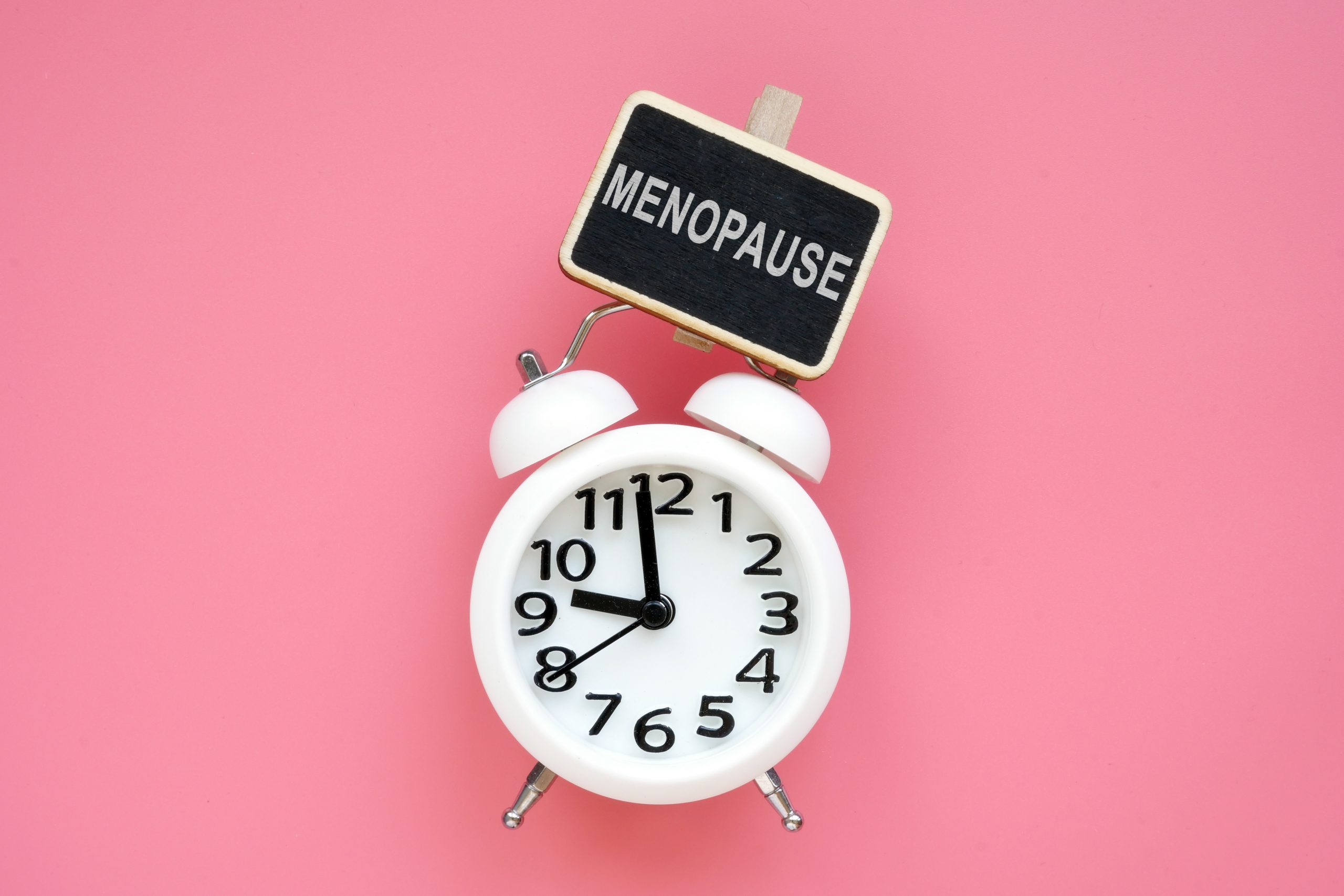
Femtech World explores the latest research developments in the world of women’s health.
Phase 2 trial of non-hormonal endometriosis treatment completed
Hope Medicine has completed a global Phase 2 study evaluating the safety and efficacy of non-hormonal endometriosis treatment – HMI-115.
HMI-115 is a monoclonal antibody that blocks the prolactin receptor, and is a potential first-in-class treatment for endometriosis.
This study included 108 female patients with surgically diagnosed endometriosis in the US, Poland and China.
According to the company, the treatment demonstrated statistically significant improvement of endometriosis associated pain.
HMI-115 was well-tolerated with no treatment-related serious adverse events.
Specifically, at the end of the study treatment, the least-square-mean dysmenorrhea pain score was reduced by 42 per cent in the 240 mg q2w group, compared to that of the baseline.
The least-square-mean non-menstrual pelvic pain score was reduced by 52 per cent.
These reductions are statistically significant. No typical peri-menopausal symptoms were reported.
There were no significant changes in menstrual patterns, bone mineral density and sex hormone levels including estradiol, LH, FSH and progesterone.
Lan Zhu, director of gynecology at Peking Union Medical College Hospital and leading investigator of the study, said: “HMI-115 relieved endometriosis pain in women without disturbing their sex hormones.
“It can potentially shift the treatment paradigm.
“We will be able to treat women without menopausal side effects or even infertility.”
Nathan Chen, CEO of Hope Medicine says that the company is now communicating with key regulatory agencies, including FDA and NMPA, to finalise the Phase 3 protocol and to initiate global Phase 3 studies.
Hormone replacement therapy may help restore immunity in menopausal women
Hormone replacement therapy (HRT) may help reverse changes in the immune system caused by menopause, potentially booting immune health, a new study has found.
The research reveals new evidence that menopause significantly alters women’s immune system, increasing their vulnerability to infections.
The study is the first detailed analysis of how ageing and sex differences influence monocytes, a key group of immune cells that act as the body’s first responders to infection.
Analysing blood samples, the team found that after menopause, women develop more inflammatory types of white blood cells called monocytes, which are less effective at clearing bacteria.
These changes were linked to lower levels of complement C3, an immune protein that helps monocytes engulf and destroy harmful microbes.
In contrast, men of the same age did not show these changes, suggesting menopause has a uniquely disruptive effect on female immunity.
To test whether hormone therapy could influence this decline, the researchers studied peri-and post-menopausal women taking HRT.
They found that these women had healthier immune profiles, with fewer inflammatory monocytes and stronger infection-fighting ability as compared to age-matched controls.
Levels of complement C3 in their blood were also higher in those taking HRT, bringing them close to the immune status of younger women.
HRT is already prescribed to manage symptoms, but this study suggests it may also help maintain immune health and reduce infection risk in later life.
The researchers caution, however, that more work is needed to confirm whether HRT reduces real-world infection rates, and to understand how different formulations or delivery methods affect the immune system.
The authors caution that while the findings are promising, the study does not mean HRT should automatically be prescribed for immune health.
More research is needed to confirm whether women taking HRT have lower infection rates in real-world settings, and to investigate how different types and route of HRT administration may affect the immune system.
New imaging technique helps us understand how eggs mature and ovaries age
The ticking of the biological clock is especially loud in the ovaries — the organs that store and release a woman’s eggs.
From age 25 to 40, a woman’s chance of conceiving each month decreases drastically.
For decades, scientists have pointed to declining egg quality as the main culprit.
But new research from UC San Francisco and Chan Zuckerberg Biohub San Francisco shows that the story is bigger than the eggs: The surrounding cells and tissues of the ovary play a crucial role in how eggs mature and how quickly fertility wanes.
Understanding these changes may hold the key not only to extending fertility, but also to improving health.
The risks of many age-related diseases rise after menopause or ovary removal, and slowing ovarian aging could help reduce these risks.
The team set out to profile what normal ageing looks like in the ovaries of mice and humans.
First, they developed a new three-dimensional imaging technique that allowed them to visualise eggs in the ovaries without having to slice the organs into thin layers, as had been done before.
In mice that were the equivalent of 30 to 40 human years, they observed a dramatic drop in both immature resting eggs that are waiting in reserve and in growing eggs that are beginning to mature for ovulation.
And just like women in their 30s, the mice did not conceive easily with in vitro fertilisation (IVF).
When the scientists extended their 3-D imaging to human ovaries, they uncovered an unexpected finding: Eggs are not evenly scattered throughout the ovary.
Instead, they cluster in “pockets” surrounded by egg-free zones. With age, the density of eggs within these pockets declines.
“This was a surprise, we assumed eggs would be distributed more evenly based on what we see in the developing ovary,” said Laird, who is a Biohub investigator and a member of the Eli and Edythe Broad Center for Regeneration Medicine at UCSF.
“These pockets suggest that even within one ovary, the environment around an egg may influence how long it lasts and how well it matures.”
Next, the researchers teamed up with Neff’s group at the Biohub to study what genes were active in ovary cells as they aged.
Ovarian tissue from humans is hard to come by, and eggs are large and incredibly fragile.
So, instead of using standard miniature devices that separate and tag cells to sequence their active genes, the group painstakingly isolated individual eggs by hand to separate them from other cells.
After studying nearly 100,000 mouse and human cells, they identified 11 major cell types found in the ovaries, including one surprise: Glia, a type of support cell typically associated with nerves and most extensively studied in the brain, were in the ovaries.
At the same time, the study revealed that sympathetic nerves, the same nerves involved in the “fight or flight” response, form dense networks in ovaries that become even more dense with age.
When the researchers ablated these nerves in mice, the animals had more eggs in reserve but fewer that matured, suggesting the nerves help decide when eggs start growing. Together, the observations on glia and sympathetic nerves suggest a new role for the nervous system in ovarian health.
Other support cells called fibroblasts also changed with age, triggering inflammation and scarring in the ovaries of women in their 50s, years earlier than such scarring appears in organs like the lungs or liver.
“This all points to a brand-new line of inquiry about how nerves, blood vessels, and other cell types communicate with eggs,” Laird said.
“It tells us that ovarian ageing is not just about the egg cells but about their whole ecosystem.”
The new roadmap of healthy ovaries over time offers a starting place to ask how ovarian aging changes in different situations.
The team is already launching studies probing whether some drugs could change the timing or speed of ovarian aging, she said.
Ultimately, they hope to uncover ways to slow or delay ovarian aging, to impact both fertility and other diseases, like cardiovascular disease, which are common in women after menopause.
“The fountain of youth may actually be the ovary,” said Eliza Gaylord PhD, a postdoctoral fellow at UCSF who is co-first author of the study.
“Delaying ovarian ageing could promote healthier aging overall.”
Hormonal birth control can influence emotions and memory
A new study shows that hormonal contraceptives appear to shape how women experience emotions in the moment and how they remember emotional events later.
Researchers compared women using hormonal contraceptives with women who were naturally cycling.
Participants viewed positive, negative and neutral images while applying different emotion regulation strategies, such as distancing, reinterpretation or immersion, and later completed a memory test.
Women on hormonal contraceptives showed stronger emotional reactions compared to naturally cycling women.
When they used strategies like distancing or reinterpretation, they remembered fewer details of negative events, though their general memory remained intact.
In other words, they could recall the overall event but not all of the specifics. That gap may actually be helpful, allowing women to move on instead of replaying unpleasant details.
Strategies like immersion boosted memory for positive images in both groups, making happy moments stick more clearly.
The findings add weight to a question many women have had but few studies have answered: How does birth control affect not just the body but the mind?
Emotion regulation and memory are tied to mental health outcomes such as depression, and this research suggests hormonal contraceptives may influence those processes in subtle but meaningful ways.
The researchers plan to expand the work by studying naturally cycling women across different menstrual phases and by comparing types of hormonal contraceptives, such as pills versus IUDs.

 News2 weeks ago
News2 weeks agoFDA plans to revise black box warning on menopause hormone therapies

 Hormonal health9 hours ago
Hormonal health9 hours agoDozens of women report suffering painful burns after using Always sanitary towels

 Entrepreneur2 weeks ago
Entrepreneur2 weeks agoAI-powered women’s health companion Nexus launches in UK

 News2 weeks ago
News2 weeks agoScientists turn human skin cells into eggs in IVF breakthrough

 News6 days ago
News6 days agoWomen’s health innovations recognised in TIME’s Best Inventions 2025

 Diagnosis2 weeks ago
Diagnosis2 weeks agoDaily pill could delay menopause ‘by years,’ study finds

 News2 weeks ago
News2 weeks agoAncient herb to modern must-have: Why ashwagandha is capturing UK women’s attention
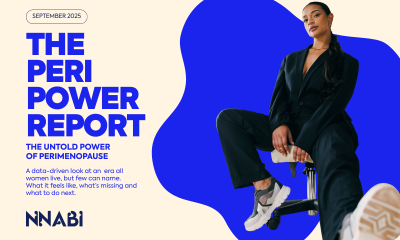
 Menopause3 weeks ago
Menopause3 weeks agoNew report exposes perimenopause as biggest blind spot in women’s health








